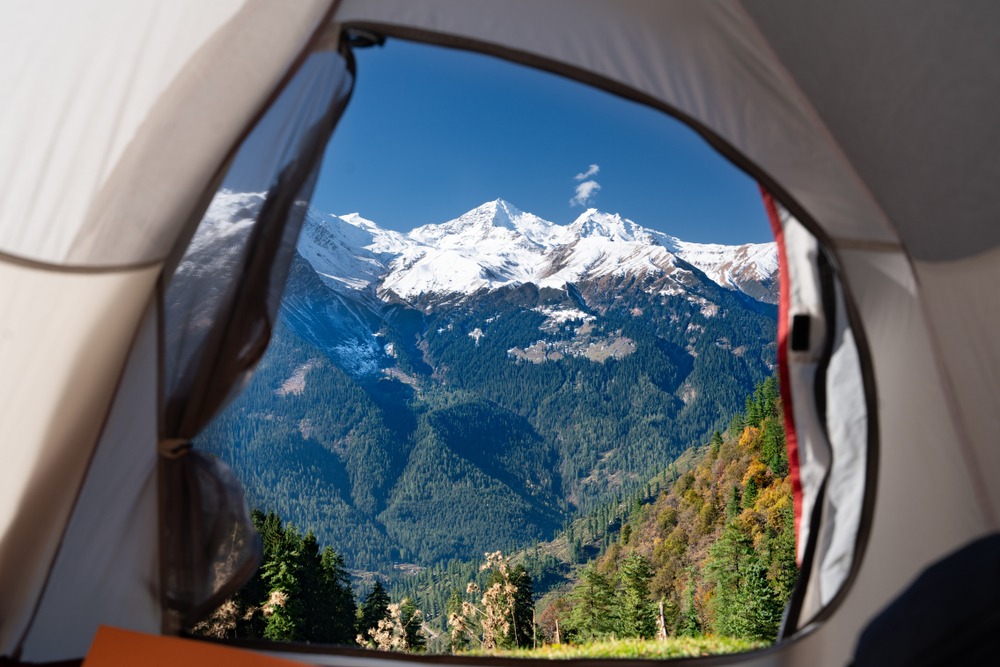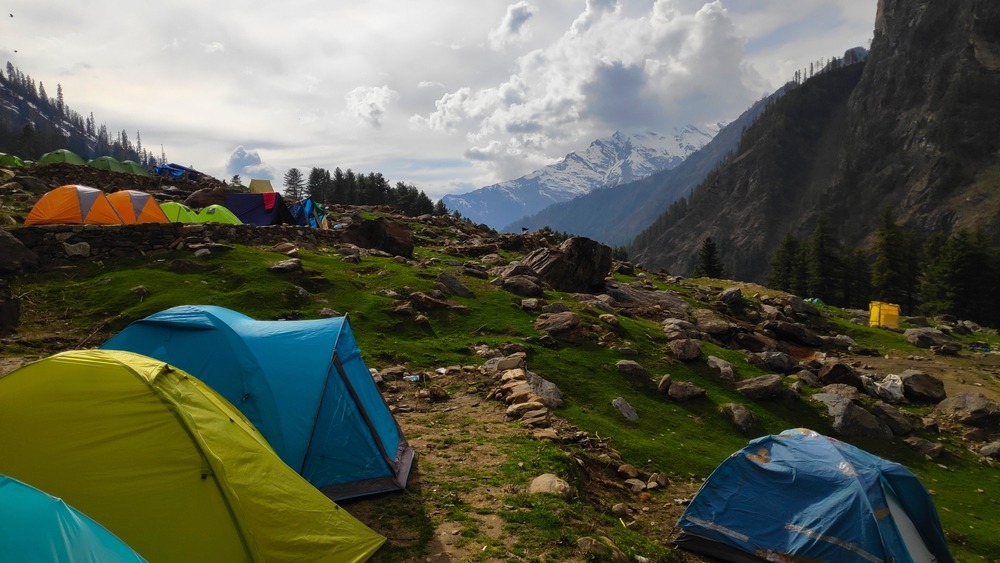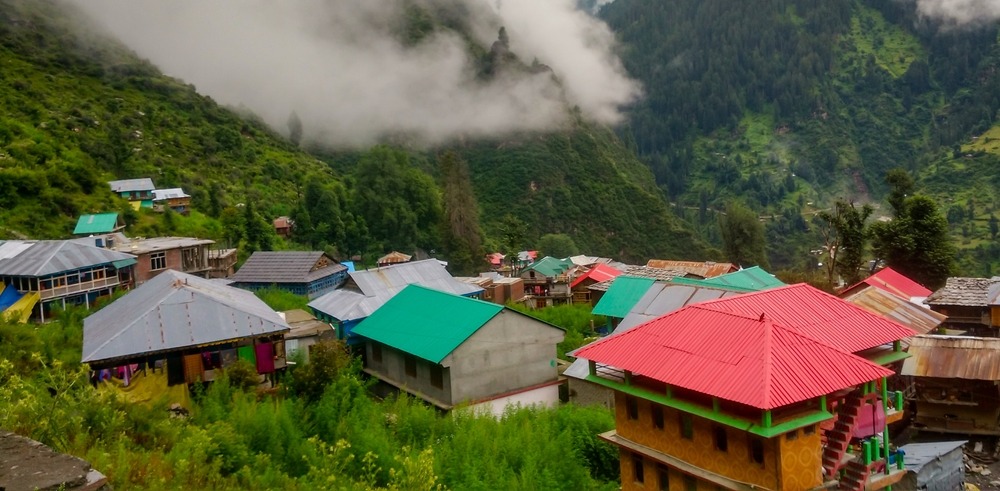Introduction To Kasol Trek
Ever since I first heard about Kasol, I knew it was a place I had to visit. Nestled in the heart of the Parvati Valley, Kasol is an absolute paradise for travelers who love nature, adventure, and the thrill of trekking through snow-covered trails. My fascination with snow trekking led me to explore Kasol’s winter wonderland, and trust me when I say—it was an experience of a lifetime! But here’s the thing: choosing the right season is everything when it comes to a snow trek. If you go too early, you might not see much snow, and if you go too late, the trails might be too dangerous to navigate. So, when is the best time to go for a snow trek in Kasol? Based on my personal experience, I’ll take you through every detail you need to know so you can plan your adventure wisely.
A snow trek is not just about walking through the white landscapes; it’s about embracing the beauty of winter, the crisp mountain air, and the raw challenge that nature presents. Kasol, with its enchanting surroundings, offers some of the best snow trek experiences in India. From easy trails for beginners to more challenging high-altitude treks, there’s something for everyone. But before you pack your bags, it’s important to understand how different seasons affect the trekking experience. Some months are perfect for a full-fledged snow trek, while others might leave you longing for more. Let’s dive into the best seasons for a snow trek in Kasol and why each one offers a unique adventure.
Understanding Kasol’s Climate

Before planning any trek, I always make it a point to understand the climate and weather patterns of the place. Kasol has distinct seasons, each offering a completely different experience. From my visits, I’ve observed that knowing what to expect in each season helps immensely in making the trek more enjoyable.
- Summer (May – June): Summer is one of the most popular seasons to visit Kasol. The weather is warm, the skies are clear, and the lush green valleys are at their best. However, if you’re looking for snow trekking, this is definitely not the time to visit. The snow has completely melted, and the trails are dry.
- Monsoon (July – September): I strongly discourage trekking during the monsoon. The heavy rainfall makes the trails extremely slippery, and landslides are quite common. I once attempted a trek during this time, and it was one of the most challenging experiences of my life—muddy trails, leeches, and unpredictable weather made it a nightmare.
- Autumn (October – November): This is when things start getting interesting! The temperatures drop, the leaves turn golden, and if you trek high enough, you might start seeing the first signs of snowfall. I personally love trekking during this time because it’s less crowded, and the scenery is breathtaking.
- Winter (December – February): This is what I had been waiting for! The snow is thick, the landscapes are straight out of a dream, and the trekking experience is surreal. If you love the idea of walking through snow-covered trails, this is the best time for a snow trek in Kasol.
- Spring (March – April): If you’re someone who wants to experience some snow but doesn’t want to deal with extreme cold, then this is a great time to visit. The snow starts melting, but you can still find patches of white on higher trails. The weather is pleasant, making trekking easier compared to peak winter.
Winter Season (December to February) – The Best Time for Snow Treks
Why I Chose to Trek in Peak Winter
The moment I arrived in Kasol during January, I knew I had made the right decision. The entire landscape was covered in a thick blanket of snow, making everything look absolutely magical. The towering pine trees were dusted with fresh snow, the roads had an icy sheen, and the air was crisp and refreshing. The best part? Fewer tourists. Unlike summer, when Kasol gets overcrowded, winter offers solitude and peace, which is perfect for a true trekking adventure.
Snow trekking in Kasol during winter is a dream come true for adventure lovers. The temperature drops significantly, sometimes reaching -10°C or lower at higher altitudes. But if you’re prepared, this adds to the thrill of the trek. Walking through knee-deep snow, crossing frozen streams, and watching the golden sunrise over snow-covered peaks is an experience I’ll never forget. However, trekking in winter requires extra preparation—proper winter gear, high-quality trekking boots, and a strong mindset to tackle the cold. If you’re up for the challenge, this is the perfect time for a real snow trek.
Top Snow Trekking Routes in Kasol
During my winter visit, I explored several trekking trails, and these are my top recommendations:
- Sar Pass Trek – This was, without a doubt, the most beautiful and challenging trek I’ve ever done. With snow-covered peaks and thrilling ascents, it tested my endurance but rewarded me with breathtaking views.
- Kheerganga Trek – What made this trek unforgettable was the natural hot springs at the top. After trekking through freezing conditions, dipping into the warm water felt like heaven.
- Tosh Valley Trek – Tosh has a picturesque village setting, and in winter, it looks like something straight out of a fairytale. This trek was relatively easy but just as rewarding.
- Grahan Village Trek – I highly recommend this for those looking for a peaceful, offbeat experience. The village was covered in fresh snow, and the hospitality of the locals made my stay even more special.
If you’re someone who loves snow, adventure, and a bit of challenge, then December to February is the best time for you to plan your snow trek in Kasol. Just make sure you are well-prepared to handle the extreme cold.
Late Autumn and Early Spring (October-November, March-April) – An Alternative Choice
Why Some Trekkers Prefer These Months
Not everyone is comfortable trekking in the harsh winter conditions, and I completely understand that. My first trek to Kasol was actually in October, and it was a completely different experience from my winter trek. The weather was cold but not unbearable, the trails were clear of thick snow, and I didn’t have to deal with extreme temperatures. If you’re someone who loves a balance of cold weather, some snowfall, and accessible trekking routes, then late autumn or early spring might be the best option for you.
During October and November, the landscape in Kasol starts changing. The green summer foliage fades into golden hues, and as you climb higher, you may spot the first dustings of snow. The best part is that the temperatures are much more manageable—usually between 0°C to 10°C, which makes trekking a lot easier. March and April, on the other hand, mark the end of the heavy winter season. Snow is still present at higher elevations, but the trails become easier to navigate. The weather is crisp and pleasant, making it perfect for those who want to experience some snow without facing extreme cold.
Comparing Late Autumn/Spring to Peak Winter
I’ve done snow treks in both winter and early spring, and the difference is quite noticeable.
| Feature | Winter (Dec-Feb) | Late Autumn/Spring (Oct-Nov, Mar-Apr) |
|---|---|---|
| Snow Cover | Heavy (knee-deep) | Moderate (patches of snow) |
| Temperature | -10°C to -15°C | 0°C to 10°C |
| Difficulty Level | High (thick snow, extreme cold) | Moderate (manageable cold, easier trails) |
| Crowd Level | Low (few trekkers) | Moderate (more tourists) |
If you’re a beginner or someone who doesn’t enjoy sub-zero temperatures, then October-November and March-April are great alternatives. You’ll still get to experience the magic of snow-covered landscapes, but in a much more comfortable setting.
Essential Gear for a Snow Trek in Kasol
Packing Smart: What I Brought on My Trek

After my first snow trek, I learned a valuable lesson—your gear can make or break your trek. The first time I went, I underestimated the cold and didn’t pack properly, which made the experience much harder than it needed to be. The next time, I made sure to carry the right equipment, and it completely changed the way I enjoyed the trek.
Here’s What I Packed for My Snow Trek in Kasol:
- Layered Clothing:
- Thermal innerwear (absolutely essential)
- Fleece jackets for insulation
- A windproof and waterproof jacket (saved me from icy winds)
- Woolen socks to keep my feet warm
- Gloves, beanies, and scarves for extra protection
- Footwear:
- A good pair of waterproof trekking boots is a must! Regular sports shoes won’t work in deep snow.
- Camping Essentials:
- A sub-zero sleeping bag (trust me, this saved my life on freezing nights)
- A high-quality tent (if you plan to camp)
- Accessories:
- Sunglasses (important to prevent snow blindness)
- Trekking poles (helpful for balance on slippery trails)
- First-aid kit (altitude sickness is real)
Renting vs. Buying Trekking Gear
One of the best decisions I made was renting trekking gear instead of buying everything new. Trekking boots, jackets, and sleeping bags can be expensive, and if you’re not a frequent trekker, it’s much more cost-effective to rent them from Kasol or Manali. You’ll save money and still get high-quality equipment.
Safety Tips for Snow Trekking in Kasol
Precautions I Took for a Safe Trek
As breathtaking as snow treks can be, they also come with risks. I made sure to take all necessary precautions to ensure a safe and enjoyable experience. Here’s what I did to stay safe:
- Acclimatization:
- Spending at least a day in Kasol before starting the trek helped my body adjust to the altitude. It’s crucial to prevent altitude sickness, which can cause headaches, nausea, and dizziness.
- Trekking with a Guide:
- Snow-covered trails can be misleading, and without proper guidance, it’s easy to lose your way. Make your Kasol trek stress-free and exciting with The Searching Souls. Their top-notch kasol trekking packages and experienced trek leaders ensure you have the adventure of a lifetime!
- Keeping a First-Aid Kit:
- I packed medications for altitude sickness, painkillers, and antiseptics. Blisters and frostbite are common, so it’s always good to be prepared.
- Checking Weather Conditions:
- Heavy snowfall can sometimes lead to trail closures. Before heading out, I always checked the weather forecast to avoid unexpected blizzards.
If you’re planning a snow trek, don’t take safety lightly. The mountains can be unpredictable, so it’s always better to be prepared for any situation.
How to Reach Kasol for a Snow Trek
My Journey to Kasol
Kasol is well-connected to major cities, but reaching it still requires some planning. Here’s how I got there:
- By Bus:
- I took an overnight Volvo bus from Delhi to Bhuntar. From Bhuntar, I hired a taxi to Kasol. This is the most budget-friendly option.
- By Car:
- If you have your own vehicle, you can drive to Kasol, but be aware that snowy roads in winter can be tricky. A 4×4 vehicle is recommended.
Budget and Cost of a Snow Trek in Kasol
How Much I Spent
I was on a budget, so I made sure to plan my trip wisely. Here’s a rough breakdown of my expenses:
| Expense | Cost (INR) |
|---|---|
| Travel (Delhi to Kasol) | 1,000 – 1,500 |
| Stay (per night) | 500 – 3,000 |
| Food (per day) | 300 – 800 |
| Guide Fee | 1,500 – 3,000 |
| Trekking Gear Rental | 1,500 – 5,000 |
| Total Cost Estimate | 6,000 – 15,000 |
How I Saved Money
- Stayed in budget hostels instead of hotels.
- Rented trekking gear instead of buying.
- Traveled in a group to share costs.
Final Verdict: When Should You Plan Your Snow Trek to Kasol?
Based on my experience, December to February is the best time for a thrilling snow trek. However, if you want milder conditions, late autumn (October-November) or early spring (March-April) can be great alternatives.
✔️ Go in winter if: You want heavy snow, fewer crowds, and an extreme adventure.
✔️ Go in autumn/spring if: You prefer moderate snow and easier trekking conditions.
Conclusion
Kasol is a trekker’s dream, and I can’t recommend a snow trek here enough! Whether you choose to visit in peak winter or during the transitional seasons, you’re in for an unforgettable experience. Plan well, pack right, and embrace the adventure!








